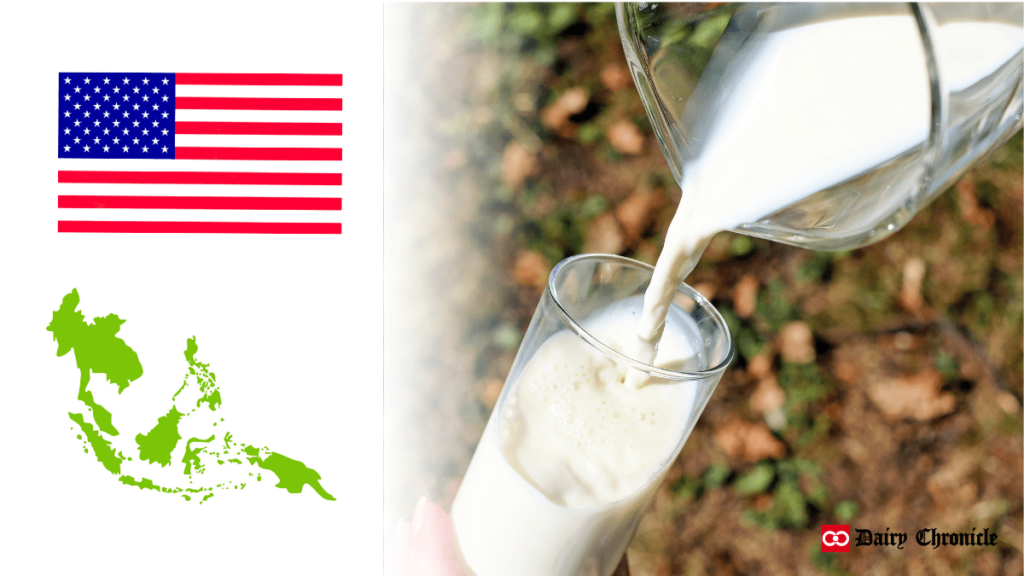U.S. dairy exports to Southeast Asia have dropped despite the region’s economic growth. Key factors include increased competition from New Zealand, a strong U.S. dollar, and lack of trade agreements, impacting market share and pricing
Despite strong economic growth in Southeast Asia, U.S. dairy exports to the region have experienced a decline. This downturn is surprising given the region’s expanding economies and increasing consumer purchasing power. For the first five months of 2024, exports to key markets including the Philippines, Indonesia, Vietnam, Malaysia, Thailand, and Singapore decreased by 5% to 440.7 million pounds compared to the same period in 2023. This drop marks the lowest export levels for this period since 2019.
Factors Contributing to the Decline
1. Loss of Market Share
Impact of Increased Competitor Shipments
The decline in U.S. dairy exports is significantly influenced by the rising market share of competitors, particularly New Zealand. New Zealand has increased its dairy shipments to Southeast Asia, which has affected the U.S. export volumes of nonfat dry milk (NDM) and skim milk powder.
Stagnant U.S. Export Growth
U.S. exports of NDM and skim milk powder have not experienced growth since 2020. This stagnation is part of a broader trend affecting overall sales of these products from the top 15 exporters. The decreased market presence of U.S. dairy products highlights the competitive challenges in maintaining market share in the region.
2. Pricing and Currency Issues
Impact of a Strong U.S. Dollar
The strength of the U.S. dollar has significantly affected dairy exports to Southeast Asia. A stronger dollar reduces the purchasing power of importing countries, making U.S. dairy products more expensive compared to those from other global suppliers.
Premium Pricing and Limited Discounts
U.S. dairy products have generally been priced at a premium relative to global competitors. Even when U.S. products are offered at a discount, the reduction has not been substantial enough to influence purchasing decisions significantly. This pricing disparity has further diminished the competitiveness of U.S. dairy products in the Southeast Asian market.
Economic Growth vs. Dairy Demand
- Disconnection Between GDP Growth and Dairy Demand
Southeast Asia has experienced robust economic growth, with significant GDP increases reported in countries such as Vietnam, Thailand, and the Philippines. However, this economic upturn has not translated into increased demand for U.S. dairy products. Despite stronger economies, these countries have not shown a corresponding rise in dairy consumption from U.S. suppliers.
- Impact of Trade Agreements
The lack of free-trade agreements between the U.S. and several Southeast Asian nations further complicates the situation. Without such agreements, U.S. dairy products face higher trade barriers and tariffs, making them less attractive compared to products from countries like New Zealand. New Zealand, which benefits from free-trade agreements, can offer more competitive pricing and better market access, making its products more appealing to buyers in the region.
- Consumer Preferences and Market Dynamics
Additionally, shifting consumer preferences and the competitive landscape in Southeast Asia influence dairy demand. Local and regional dairy products, often priced more competitively, may align better with changing tastes and economic conditions in these markets. The combination of pricing pressures and the competitive advantage of other suppliers has resulted in stagnant or declining U.S. dairy exports despite the region’s economic growth.
The decline in U.S. dairy exports to Southeast Asia highlights the challenges faced by the sector, including increased competition, pricing issues, and currency fluctuations. For U.S. dairy exports to rebound, a significant adjustment in pricing strategy and trade agreements may be necessary to regain market share and competitiveness in this growing region.



